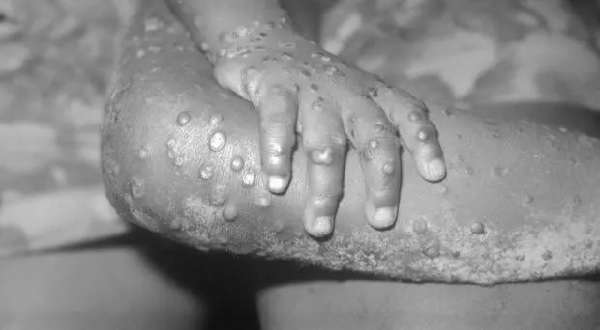Place your adverts here on InfoDig @ low rates; banner ads, sponsored links and guest articles etc. Contact us
 Mpox virus
Mpox virusMpox, previously known as Monkeypox, is a viral disease that has emerged as a significant public health concern in recent years. Despite its historical roots and relatively recent resurgence, Mpox presents challenges that necessitate a thorough understanding of its history, treatment, and prevention strategies. This article explores the evolution of Mpox, its current treatment options, and the measures required to prevent its spread effectively.
Historical overview of Mpox
Mpox is caused by the Mpox virus, a member of the Orthopoxvirus genus, which also includes the variola virus responsible for smallpox. The Mpox virus was first identified in 1958 when it was discovered in laboratory monkeys, hence the name “Monkeypox.” The first human case was reported in the Democratic Republic of the Congo (DRC) in 1970, marking the beginning of our understanding of Mpox as a zoonotic disease—one that can be transmitted from animals to humans.
Historically, Mpox was largely confined to Central and West African regions, where it was endemic in certain animal populations, particularly rodents. The disease was relatively rare but notable for causing localised outbreaks. Its symptoms are similar to those of smallpox, though typically less severe. Mpox gained international attention in the 2000s when outbreaks began to occur outside Africa, particularly in the United States and the United Kingdom.
The global spread of Mpox in recent years has been influenced by various factors, including increased international travel and changes in animal-human interactions. This resurgence highlights the need for enhanced surveillance, better treatment options, and more effective preventive measures.
Treatment options for Mpox
Currently, there is no specific antiviral treatment approved solely for Mpox. Management of the disease primarily focuses on supportive care, which involves addressing symptoms and complications. However, several treatment strategies and therapeutic options are available:
Supportive care: Most Mpox cases are mild and self-limiting. Supportive care includes hydration, fever management, and pain relief. Patients are advised to rest and maintain proper nutrition to support their recovery.
Antiviral medications: In severe cases, antiviral medications used for treating smallpox, such as tecovirimat (TPOXX) and brincidofovir, may be considered. These drugs have been shown to be effective against other orthopoxviruses and are available under expanded access provisions or for use in clinical trials.
Vaccination: The smallpox vaccine provides cross-protection against Mpox. Vaccination is particularly important for individuals at high risk of exposure, such as healthcare workers, close contacts of infected individuals, and residents of areas with ongoing outbreaks. In some countries, health authorities may recommend vaccination during outbreaks to help control the spread.
Experimental treatments: Research is ongoing to develop specific treatments for Mpox, including new antiviral drugs and monoclonal antibodies that target the virus directly. Clinical trials are essential for assessing the safety and efficacy of these potential treatments.
Symptomatic relief: Patients are often given medications to alleviate specific symptoms, such as antihistamines for itching and antibiotics if secondary bacterial infections occur.
Preventive measures for Mpox
Effective prevention of Mpox involves a combination of vaccination, public health measures, and individual practices. Key strategies include:
Vaccination: The smallpox vaccine is the most effective preventive measure against Mpox. Post-exposure vaccination can also help prevent the onset of disease if administered within a few days of exposure. Countries with a higher risk of Mpox outbreaks often have vaccination programmes targeting at-risk populations.
Surveillance and early detection: Enhanced surveillance systems are crucial for the early detection of Mpox cases. Health authorities should monitor for signs of Mpox in both humans and animals and report any suspected cases promptly. Early identification helps in isolating cases and preventing further spread.
Public education: Raising awareness about Mpox, its symptoms, and transmission routes is essential. Public health campaigns should educate people about avoiding contact with potentially infected animals, practising good hygiene, and seeking medical attention if symptoms develop.
Animal control: Since Mpox is zoonotic, controlling the disease in animal populations is critical. This involves monitoring and managing wildlife and domestic animals that may carry the virus. Infected animals should be isolated or euthanised to prevent transmission to humans.
Infection control practices: Healthcare workers and caregivers should follow stringent infection control measures, including using personal protective equipment (PPE) when handling infected patients. Proper disinfection and sanitation practices are necessary to prevent the spread of the virus in healthcare settings and the community.
International collaboration: Given the global nature of disease transmission, international collaboration is vital. Countries should share information, resources, and expertise to respond effectively to Mpox outbreaks. Collaborative efforts can help manage cross-border spread and ensure that preventive measures are implemented uniformly.
Travel advisories: During outbreaks, travel advisories may be issued to inform travellers of the risks and recommend preventive measures. Travellers to areas with reported Mpox cases should be vigilant about their health and adhere to recommended precautions.

 8 hours ago
36
8 hours ago
36















 English (US) ·
English (US) ·